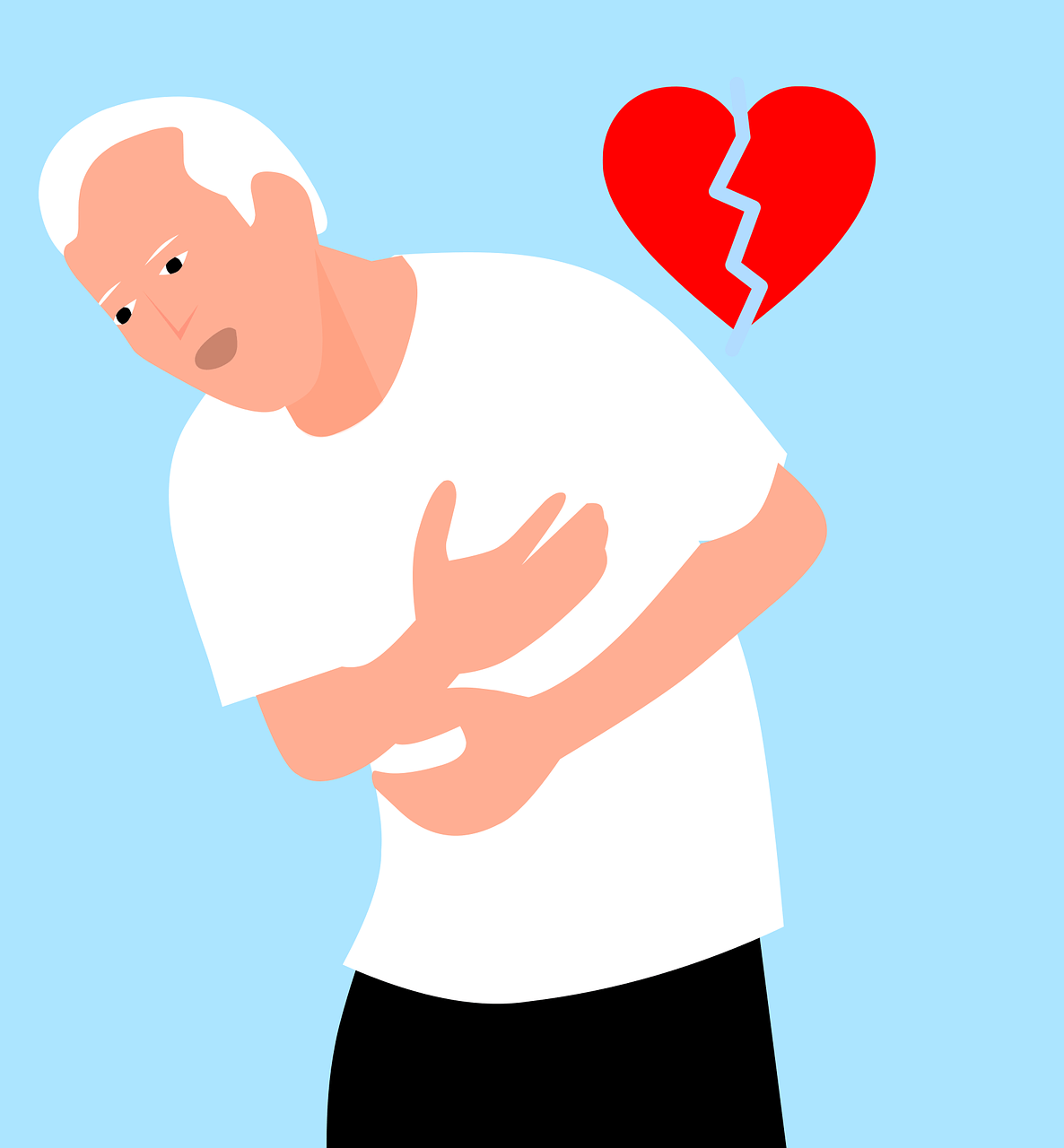I. Introduction
A. Brief Overview of Heart Disease:
Heart disease, also known as cardiovascular disease, refers to a class of diseases that affect the heart and blood vessels. It is a broad term that includes various conditions like coronary artery disease, heart failure, congenital heart disease, and arrhythmias, among others. Heart disease is currently the leading cause of death worldwide, causing significant mortality and morbidity.
B. The Importance of Understanding Risk Factors and Prevention:
Understanding the risk factors for heart disease is critical in prevention and early intervention. Some risk factors such as age, gender, and genetic predisposition are non-modifiable, but many others can be managed or even eliminated with lifestyle changes and medical treatment. The prevention of heart disease is a key strategy in reducing its incidence and impact, involving steps that individuals can take to decrease their risk, such as maintaining a healthy diet, exercising regularly, avoiding tobacco use, and managing stress.
C. The Objectives of the Article:
The objectives of this article are to provide a comprehensive understanding of heart disease, its risk factors, and effective prevention methods. The article aims to empower readers with knowledge, answering possible questions and guiding them on their journey towards heart health.
II. Understanding Heart Disease
A. Definition of Heart Disease:
Heart disease, also referred to as cardiovascular disease, encompasses a range of conditions affecting the heart and the vascular system. It generally refers to conditions that involve narrowed or blocked blood vessels, which can lead to heart attacks, chest pain (angina), or stroke. It can also include other heart conditions affecting the heart’s muscle, valves, or rhythm.
B. Different Types of Heart Disease:
- Coronary Artery Disease (CAD): This is the most common type of heart disease, where the coronary arteries that supply the heart muscle with blood become hardened and narrowed due to the buildup of plaque, a condition known as atherosclerosis.
- Heart Failure: This occurs when the heart can’t pump blood as well as it should, often resulting from CAD or high blood pressure.
- Arrhythmias: These are abnormal heart rhythms, which can cause the heart to beat too fast, too slow, or irregularly.
- Valvular Heart Diseases: These involve damage to one or more of the heart’s valves, disrupting blood flow.
- Congenital Heart Diseases: These are heart defects that a person is born with.
C. Prevalence and Statistics of Heart Disease:
As per the World Health Organization, heart disease is the leading cause of death globally. An estimated 17.9 million people died from heart disease in 2019, representing 32% of all global deaths. In the United States, it is estimated that one person dies every 36 seconds from cardiovascular disease. These statistics underscore the urgency of addressing heart disease as a critical public health issue.
III. Risk Factors for Heart Disease
A. Genetic Factors:
There is a strong genetic component to heart disease. A family history of heart disease, especially if a first-degree relative (parent or sibling) was diagnosed at an early age, can significantly increase an individual’s risk. Specific genetic disorders, like familial hypercholesterolemia, can also predispose to heart disease.
B. Lifestyle Factors:
- Diet: A diet high in saturated fats, trans fats, sodium, and cholesterol can contribute to the development of heart disease by leading to high blood pressure and atherosclerosis.
- Exercise: Sedentary lifestyle can lead to obesity and high blood pressure, both of which are risk factors for heart disease.
- Smoking: Smoking damages the lining of the arteries, leading to a buildup of plaque and increasing the risk of heart disease.
- Alcohol: Excessive alcohol can raise blood pressure, contribute to obesity, and lead to heart failure or stroke.
C. Health Conditions:
- Hypertension: High blood pressure forces the heart to work harder, which can lead to thickening of the heart muscle and atherosclerosis.
- Diabetes: High blood sugar levels can damage blood vessels and nerves that control the heart, significantly increasing the risk of heart disease.
- Obesity: Excess weight increases the heart’s workload and raises blood pressure and cholesterol levels.
- High Cholesterol: Elevated levels of LDL (“bad”) cholesterol in the blood can lead to the formation of plaques and atherosclerosis.
D. Psychological Factors:
Stress, depression, and anxiety can all influence the heart in numerous ways. They can lead to increased blood pressure, alter heart rhythms, and negatively impact the overall cardiovascular system. Additionally, these conditions may make it harder for individuals to maintain a healthy lifestyle.
E. Environmental Factors:
Air pollution and living conditions (like access to healthy food and safe places to exercise) can also contribute to the risk of heart disease. Long-term exposure to high levels of air pollution has been linked to an increase in heart attacks and strokes.
IV. Prevention Methods for Heart Disease
A. Healthy Diet and its Impact:
Eating a heart-healthy diet can significantly reduce the risk of heart disease. This involves consuming a variety of fruits and vegetables, whole grains, lean proteins, and healthy fats. Limiting the intake of saturated and trans fats, sodium, added sugars, and red meats is also crucial. The Mediterranean diet, which is high in fruits, vegetables, whole grains, and lean protein, is often recommended for heart health. A healthy diet can help lower blood pressure, reduce cholesterol levels, maintain a healthy weight, and prevent diabetes, all of which contribute to heart health.
B. Regular Physical Activity:
Regular exercise is key in maintaining a healthy heart. It helps control weight, reduces the risk of heart disease by improving heart function and blood circulation, and helps manage stress and improve mood. The American Heart Association recommends at least 150 minutes of moderate-intensity or 75 minutes of high-intensity aerobic activity each week, combined with muscle-strengthening activities at least two days a week.
C. Quitting Smoking and Limiting Alcohol Consumption:
Smoking is one of the leading causes of heart disease. Quitting smoking can significantly reduce the risk of heart disease, regardless of how long or how much a person has smoked. Limiting alcohol consumption is also important, as excessive alcohol can increase blood pressure, contribute to obesity, and lead to heart failure or stroke.
D. Regular Health Screenings and Check-ups:
Regular health check-ups allow for early detection of conditions that increase the risk of heart disease, such as high blood pressure, high cholesterol, and diabetes. Regular screenings can help in managing these conditions early, reducing the risk of heart disease.
E. Stress Management and Mental Health:
Managing stress and maintaining good mental health are also vital in preventing heart disease. This can include practices like yoga, meditation, deep-breathing exercises, maintaining a positive outlook, and seeking professional help when necessary. Stress can lead to unhealthy behaviors that increase heart disease risk, such as overeating, smoking, or drinking alcohol.
V. The Role of Medical Treatment in Heart Disease Prevention
A. Medications:
- Statins: These are drugs that lower the level of cholesterol in the blood by reducing the production of cholesterol by the liver. They can reduce the risk of heart attacks and strokes.
- Antihypertensives: These medications control high blood pressure, a significant risk factor for heart disease. There are several classes of antihypertensives, each working in a different way to lower blood pressure.
- Antiplatelets: These drugs, such as aspirin, prevent blood clots’ formation, which can cause heart attacks and strokes.
B. Surgery and Procedures:
- Angioplasty: This procedure is used to open blocked or narrowed coronary arteries, improving blood flow to the heart.
- Bypass Surgery: Also known as coronary artery bypass grafting (CABG), this surgery creates a new pathway around a blocked coronary artery, allowing blood to reach the heart muscle.
C. The Importance of Regular Follow-ups and Adherence to Prescribed Treatments:
Regular follow-ups with healthcare providers are essential in managing heart disease. They ensure that the treatment plan is working and can be adjusted as necessary. Adherence to prescribed treatments, including medications, lifestyle modifications, and follow-up appointments, is crucial in preventing the progression of heart disease and reducing the risk of serious complications.
VI. Conclusion
A. Summary of Key Points Discussed in the Article:
This article has provided a comprehensive overview of heart disease, its various types, and the prevalence globally. It has delved into the different risk factors for heart disease, including genetic, lifestyle, health conditions, psychological, and environmental factors. The importance of prevention methods was also discussed, with emphasis on a healthy diet, regular physical activity, quitting smoking, limiting alcohol consumption, regular health check-ups, and stress management. The role of medical treatment in heart disease prevention was also highlighted, with a focus on various medications and surgical procedures.
B. Emphasizing the Role of Lifestyle Changes and Preventive Measures:
While heart disease is a major health concern, it’s important to emphasize that many of its risk factors can be controlled through lifestyle changes and preventive measures. Adopting a heart-healthy diet, engaging in regular physical activity, quitting smoking, and limiting alcohol consumption can significantly reduce heart disease risk. Regular health check-ups and stress management also play a crucial role in maintaining heart health.
C. Final Thoughts and Advice to the Readers:
Heart disease is a pervasive condition, but with knowledge, awareness, and action, it is preventable and manageable. It’s important for individuals to take an active role in their heart health, making lifestyle modifications where necessary and regularly consulting with healthcare
providers. Remember, it’s never too late to start on a path towards a healthier heart.










